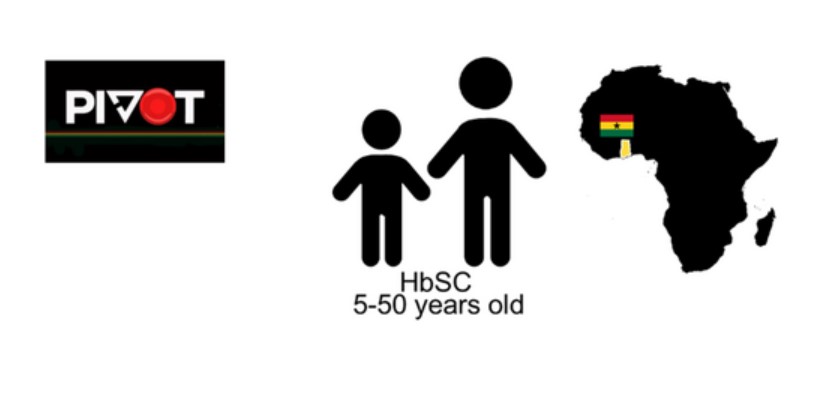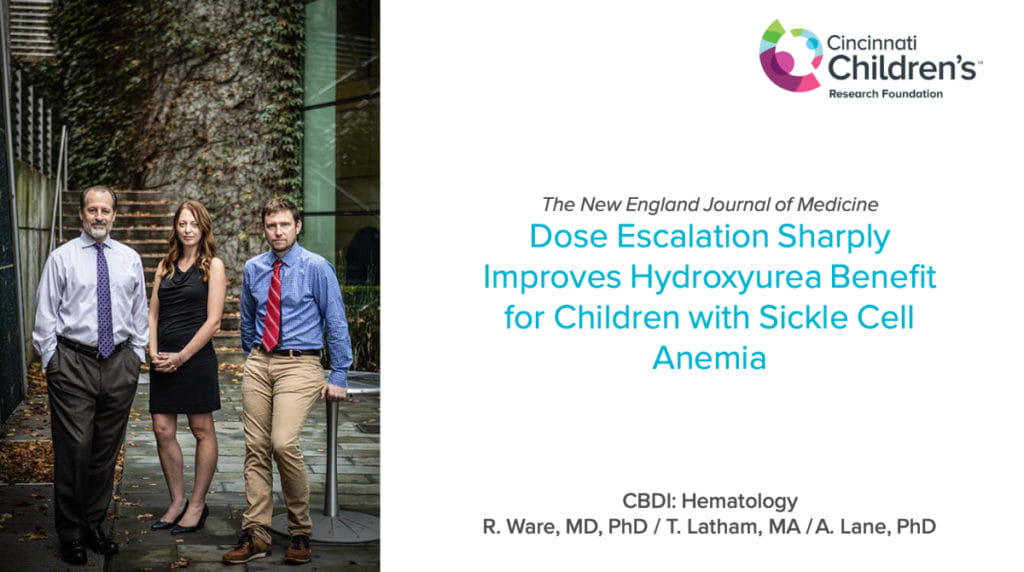
Russell E. Ware, MD, PhD
- Director, Division of Hematology
- Institute Co-Executive Director, Cancer and Blood Diseases Institute
- Director, Global Health Center
- Marjory J. Johnson Chair of Hematology Translational Research
- Professor, UC Department of Pediatrics
- russell.ware@cchmc.org
- Board Certified
About
Biography
As a practicing pediatric hematologist for 30 years, I provide care for children with a wide variety of hematological disorders. My primary focus is the evaluation and management of care for children with sickle cell anemia and other hemolytic anemias. I also treat children who present with other forms of anemia, as well as neutropenia or thrombocytopenia.
When I began my career, there were almost no treatments available for sickle cell anemia. We now have many new diagnostic tools and novel approaches to help improve our young patients' lives. I have always enjoyed providing direct clinical care as well as performing laboratory investigations that lead to more effective care and improved outcomes for our children.
My research goals are to determine the best ways to use hydroxyurea for children with sickle cell anemia and to understand why some children respond better than others. I’m investigating the genetic basis for treatment outcomes and hope to optimize hydroxyurea treatment for each patient. Transforming the clinical care of children with sickle cell anemia across the world, through the widespread use of hydroxyurea, is my long-term research goal.
Our studies include both translational and clinical research. I have led several National Institutes of Health (NIH)-funded trials of hydroxyurea to prevent stroke in children with sickle cell anemia, demonstrating the efficacy of this simple daily oral medication. I’m also investigating the use of hydroxyurea in low-resource settings, focusing on sub-Saharan Africa and the Caribbean. Our exciting results have shown the feasibility, safety and benefits of hydroxyurea in these settings, which could potentially transform the treatment landscape for sickle cell anemia worldwide. Some of my research trials also include point-of-care diagnostics and optimizing hydroxyurea treatment through individualized dosing.
Improving the care and health of children with sickle cell anemia has been a rewarding career goal. However, taking what we have learned in the United States and bringing this knowledge to low-resource countries has been even more gratifying. With support from the Cincinnati Children's Research Foundation, we have established productive global partnerships with local partners in six sub-Saharan countries and two Caribbean islands. These collaborations are changing the approach to diagnosing and treating sickle cell anemia worldwide.
MD: Duke University School of Medicine, Durham, NC, 1979-83.
Residency: Baylor College of Medicine, Houston, TX, 1983-86.
Fellowship: Duke Medical Center, Durham, NC, 1986-89.
PhD: Duke University School of Medicine, Durham, NC, 1987-91.
Certification: Pediatric Hematology/Oncology.
Research Areas
Location
Insurance Information
Cincinnati Children's strives to accept a wide variety of health plans. Please contact your health insurance carrier to verify coverage for your specific benefit plan.
Publications
Development of disease-specific growth curves from Kenyan children with sickle cell anemia. 2025; 1:100031.
A New First-Line Option for Pediatric ITP-Incremental Progress or Paradigm Shift?. Journal of the American Medical Association (JAMA). 2025; 334:1802-1803.
Microsensor Array for the Electrochemical Analysis of Hydroxyurea in Blood Samples of Children Affected by Sickle Cell Anemia. Analytical Chemistry. 2025; 97:24399-24414.
Thirty Years of Hydroxyurea for Sickle Cell Anemia - Scientific Progress, Global Health Gaps. The New England Journal of Medicine. 2025; 393:1556-1559.
Erythrocyte alloimmunization in children with sickle cell anemia living in Kilifi, Kenya. 2025; 1:100016.
Circulating Immune Complexes and Glucose-6-Phosphate Dehydrogenase Deficiency Predict Recurrent Blackwater Fever in Ugandan Children With Severe Malaria. The Journal of Infectious Diseases. 2025; 232:285-297.
The feasibility of pharmacokinetic-based dosing of hydroxyurea for children with sickle cell anaemia in Uganda: Baseline results of the alternative dosing and prevention of transfusions trial. British Journal of Clinical Pharmacology. 2025; 91:1865-1872.
Malaria prophylaxis in sickle cell anaemia: some answers, more questions. The Lancet Infectious Diseases. 2025; 25:601-602.
Hydroxyurea to decrease stroke risk in children with sickle cell anemia: a systematic review and meta-analysis. 2025; 1:100001.
The feasibility of pharmacokinetic-based dosing of hydroxyurea for children with sickle cell anaemia in Uganda: Baseline results of the alternative dosing and prevention of transfusions trial. British Journal of Clinical Pharmacology. 2025; 91:1865-1872.
From the Blog
Hydroxyurea May Help People With HbSC Form of Sickle Cell Disease
Russell E. Ware, MD, PhD12/9/2024
Dose Escalation Sharply Improves Hydroxyurea Benefit for Children with Sickle Cell Anemia
Russell E. Ware, MD, PhD, Adam Lane, PhD3/22/2021
WHO Features Cincinnati Children’s Sickle Cell Research in Tanzania
Russell E. Ware, MD, PhD, Luke R. Smart, MD12/10/2020
In NEJM: Dose Escalation Best Approach for Sickle Cell Med in Africa
Russell E. Ware, MD, PhD6/25/2020
Moms with Sickle Cell Anemia Can Take Life-Saving Med and Breastfeed Baby
Russell E. Ware, MD, PhD3/30/2020











Patient Ratings and Comments
All patient satisfaction ratings and comments are submitted by actual patients and verified by a leading independent experience management company, Qualtrics. Patient identities are withheld to ensure confidentiality and privacy. Only those providers whose satisfaction surveys are administered through Cincinnati Children’s Hospital Medical Center are displayed. Click here to learn more about our survey